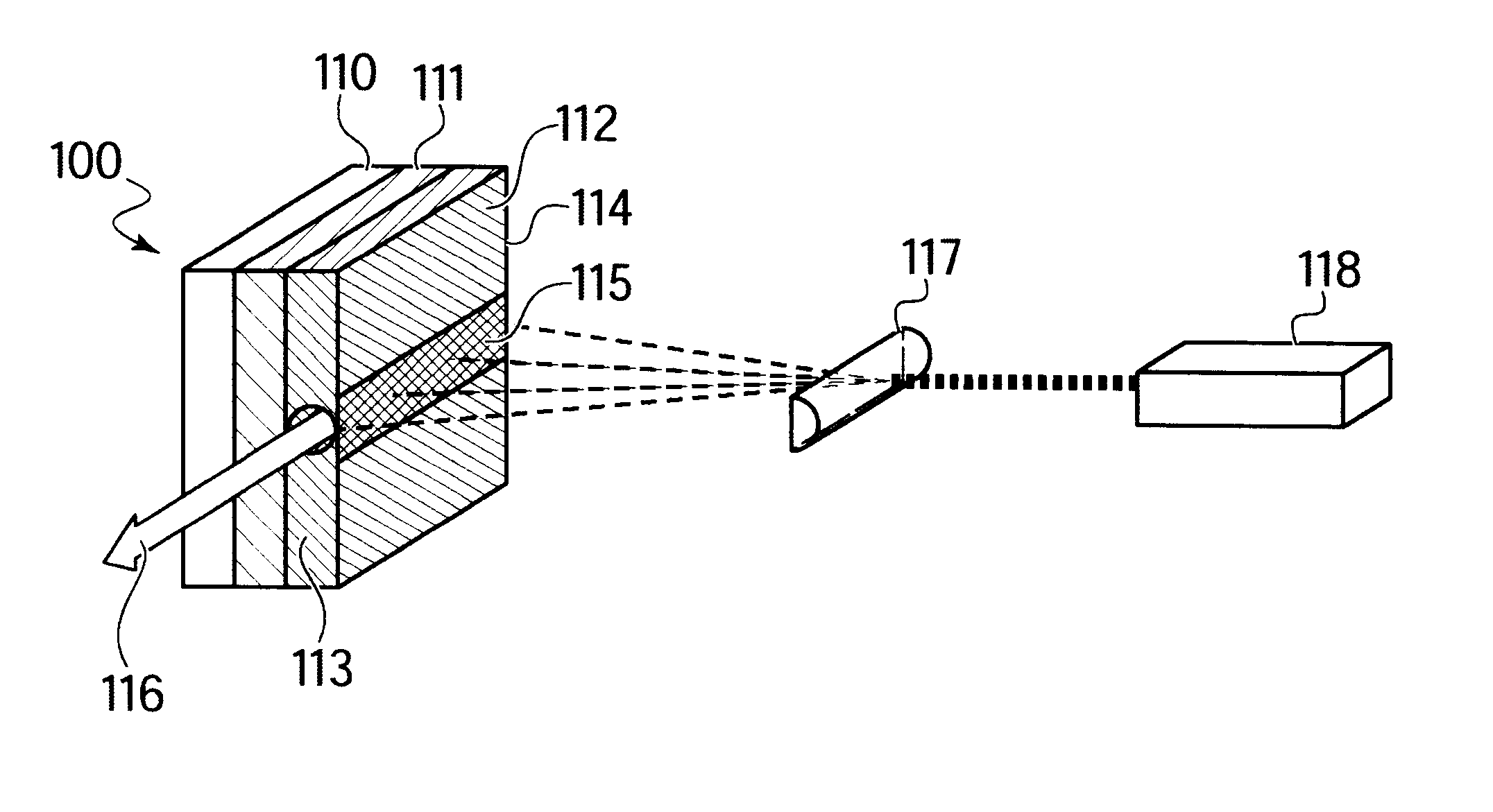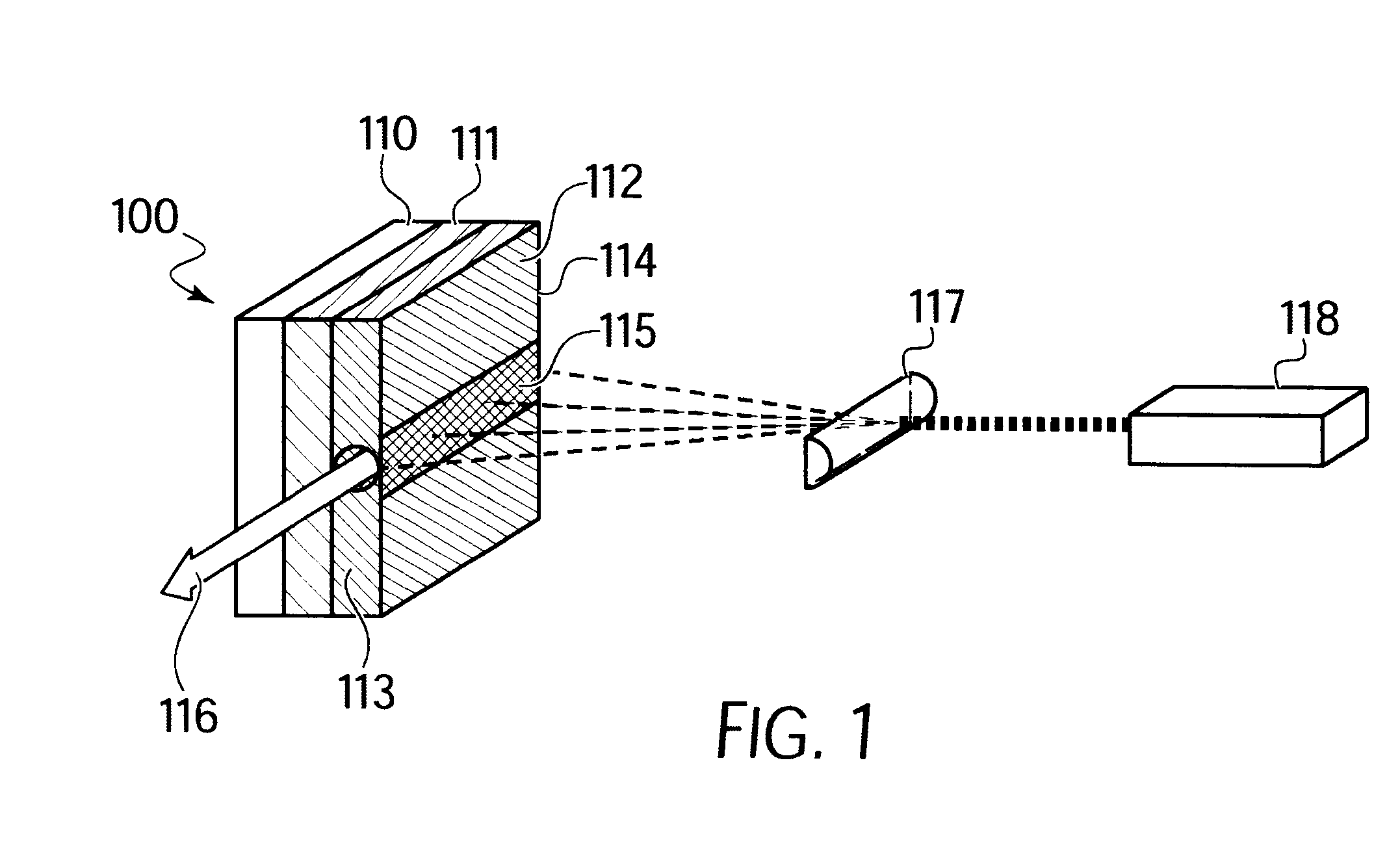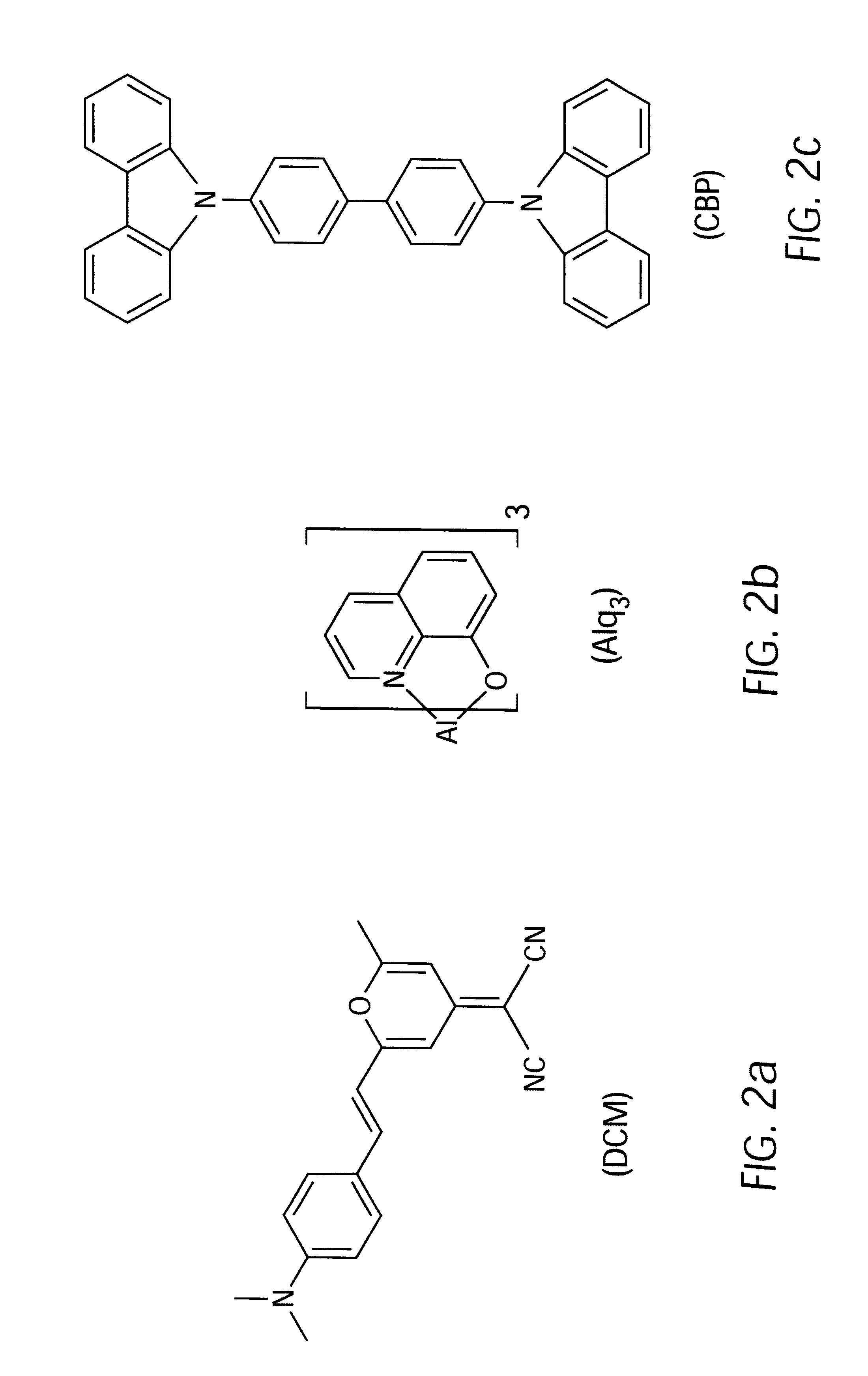Organic semiconductor lasers
a laser and organic semiconductor technology, applied in semiconductor lasers, lasers, active medium materials, etc., can solve the problems of inability to reliably operate laser diodes in blue, green and yellow spectral ranges, and the measured differential quantum efficiency is considerable underestimated, and the pump power is lost in non-lasing regions
- Summary
- Abstract
- Description
- Claims
- Application Information
AI Technical Summary
Problems solved by technology
Method used
Image
Examples
example 2
An OSL was formed by vacuum-depositing an organic film containing coumarin-47-doped CBP onto the (100) crystallographic surface of a polished InP substrate. The substrate was pre-coated with a 2 .mu.m layer of SiO.sub.2, deposited by plasma enhanced chemical vapor deposition. The OSL was optically pumped with 500 psec pulses generated by a nitrogen laser at .lambda.=337 nm, with a 50 Hz repetition rate. The pump beam was focused onto a 50 .mu.m width region on the organic film to form the gain region.
The optically-pumped OSL resulted in a lasing wavelength of approximately 455 nm and a lasing threshold of 15 .mu.J / cm.sup.2. Moreover, the OSL exhibited an operational lifetime on the order of 10.sup.3 laser pulses.
example 3
An OSL was formed by vacuum-depositing an organic film containing coumarin-30-doped CBP onto the (100) crystallographic surface of a polished InP substrate. The substrate was pre-coated with a 2 .mu.m layer of Sio.sub.2, deposited by plasma enhanced chemical vapor deposition. The OSL was optically pumped with 500 psec pulses generated by a nitrogen laser at .lambda.=337 nm, with a 50 Hz repetition rate. The pump beam was focused onto a 50 .mu.m width region on the organic film to form the gain region.
The optically-pumped OSL resulted in a lasing wavelength of approximately 510 nm and a lasing threshold of 13 .mu.J / cm.sup.2. Moreover, the OSL exhibited an operational lifetime on the order of 10.sup.2 laser pulses.
example 4
An OSL was formed by vacuum-depositing an organic film containing DCM2-doped Alq.sub.3 onto a polished InP substrate. The substrate was pre-coated with a 2 .mu.m layer of SiO.sub.2, deposited by plasma enhanced chemical vapor deposition. The OSL was optically pumped with 500 psec pulses generated by a nitrogen laser at .lambda.=337 nm, with a 50 Hz repetition rate.
The optically-pumped OSL resulted in a lasing wavelength of approximately 670 nm and a lasing threshold of 2.5 .mu.J / cm.sup.2. Moreover, the OSL exhibited an operational lifetime in excess of 10.sup.6 laser pulses and a differential quantum efficiency of approximately 30%.
PUM
| Property | Measurement | Unit |
|---|---|---|
| lasing wavelength | aaaaa | aaaaa |
| lasing wavelength | aaaaa | aaaaa |
| lasing wavelength | aaaaa | aaaaa |
Abstract
Description
Claims
Application Information
 Login to View More
Login to View More - R&D
- Intellectual Property
- Life Sciences
- Materials
- Tech Scout
- Unparalleled Data Quality
- Higher Quality Content
- 60% Fewer Hallucinations
Browse by: Latest US Patents, China's latest patents, Technical Efficacy Thesaurus, Application Domain, Technology Topic, Popular Technical Reports.
© 2025 PatSnap. All rights reserved.Legal|Privacy policy|Modern Slavery Act Transparency Statement|Sitemap|About US| Contact US: help@patsnap.com



